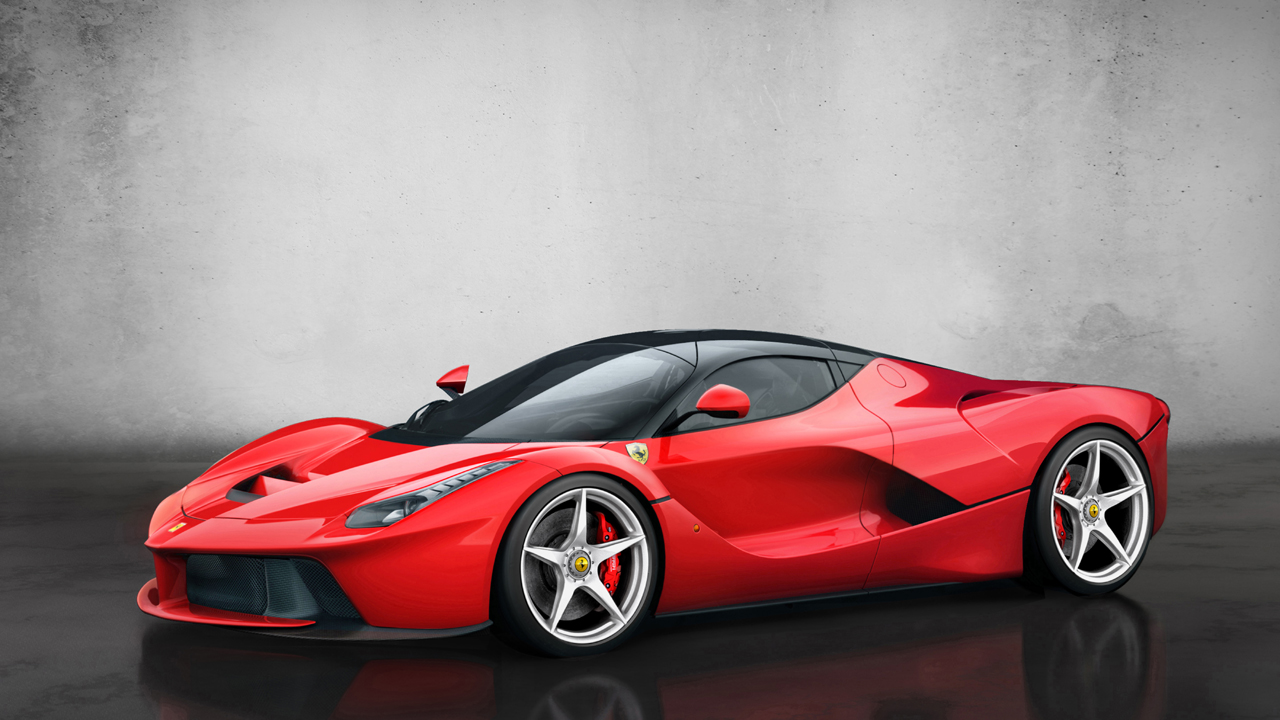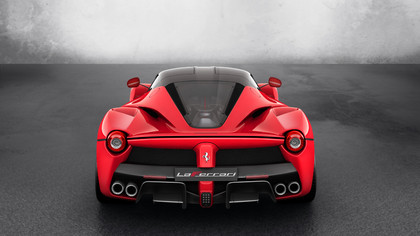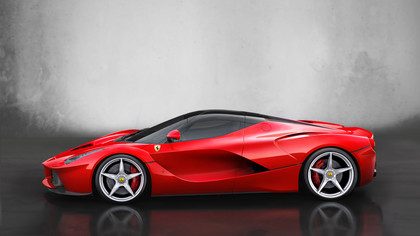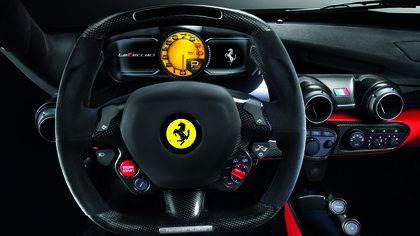Lithium-powered 'LaFerrari' brings F1 tech and performance to the road
Dual electric motors. 6.3-litres of petrol power. 60mph in less than three seconds. Yikes.

Formula One tech and performance for the road. That's the take-home story from the new LaFerrari, the latest and most outrageous supercar from Ferrari.
Ferrari's first full-on supercar since the decade-old Enzo, the LaFerrari combines electric motors, a lithium battery pack and a traditional V12 petrol engine to create the highest performing Ferrari supercar ever.
In fact, by some metrics, the LaFerrari actually eclipses current F1 cars. The raw power and torque numbers certainly take some reading.
Petrol power comes from a 6.3-litre V12. It's good for 800hp at a ridiculous 9,000rpm and 512lb/ft of torque.
Petrol-electric powerhouse
A pair of electric motors and and 60-odd kg lithium battery pack provide another 163hp in what Ferrari says is a performance-boosting HY-KERS package that takes its cues from the Ferrari F1 car's KERS technology.

Indeed, Ferrari says the LaFerrari's lithium battery pack is assembled by the F1 Team in their workshop.
The result is claimed performance of 60mph in less than three seconds, 125mph in under seven seconds and a top speed in excess of 215mph.
Get daily insight, inspiration and deals in your inbox
Sign up for breaking news, reviews, opinion, top tech deals, and more.
Of course, the HY-KERS package isn't just about preposterous performance. It's also about efficiency. The LaFerrari is still going through final homologation. But Ferrari reckons its CO2 emissions will register around 330g/km.
That sounds like a lot until you realise a Bugatti Veyron kicks out almost twice as much. And it's not nearly twice as fast as a LaFerrari. In fact, round a track it's probably no faster at all.
That's the benefit you get from the ability to use brake energy regeneration to recharge the lithium battery pack.
Active aero
But the powertrain is the only the beginning of the LaFerrari's technology tour de force. There's active aerodynamics, something largely outlawed on F1 cars, for instance.
Everything from the front diffusers and guide vane on the underbody to the rear diffusers and rear spoiler are configured according to a range of real-time parameters. Ferrari also claims the car's basic shell is the most aerodynamic ever, something achieved courtesy of the Ferrari F1 team's wind tunnel.

Then there's four different types of carbon fibre in the body, again, built by the F1 team. Super light and super strong, it allows the LaFerrari to weigh in at just 1,255kg, despite all that HY-KERS gubbins. It's lighter than a basic Porsche Boxster, in other words. Impressive.
Rounding out the tech smorgasbord are a plethora of digital control systems. From the driver's perspective, that boils down to the Manettino dial on the steering wheel.
Manettino from Maranello
On existing Fezzas, the Manettino dial allows you to changes the mood from facile to ferocious in an instant, tweaking everything from throttle response and gearchange speed to suspension stiffness in an instant.

It's hard to imagine quite what the range of calibration will be on offer from the LaFerrari. But assuming it kicks off at ferocious, selecting a more aggressive setting will presumably deliver something downright feral.
For a flavour of what we're talking about, check out the official Ferrari video in all its 1080p glory. Set your speakers to stun and let it rip.
YouTube : youtubeurl
Just 499 LaFerraris will be built and we've an inkling most will already have been spoken for. So get your £1 million / $1.5 million order in now.
Technology and cars. Increasingly the twain shall meet. Which is handy, because Jeremy (Twitter) is addicted to both. Long-time tech journalist, former editor of iCar magazine and incumbent car guru for T3 magazine, Jeremy reckons in-car technology is about to go thermonuclear. No, not exploding cars. That would be silly. And dangerous. But rather an explosive period of unprecedented innovation. Enjoy the ride.